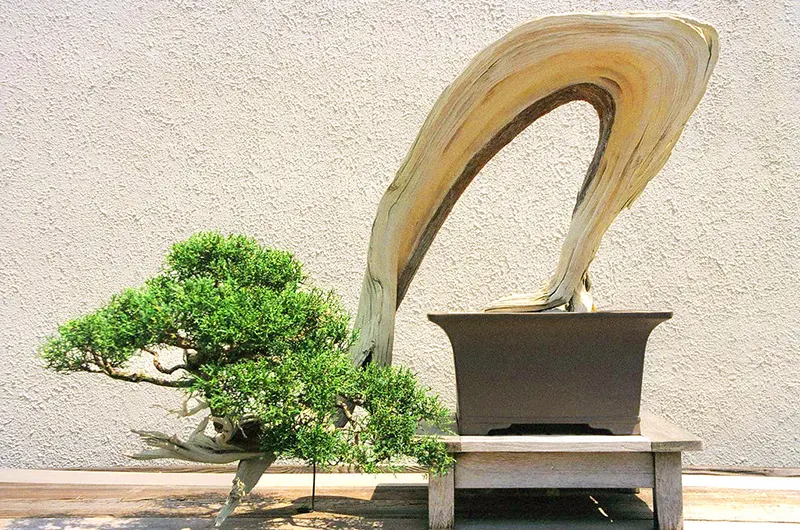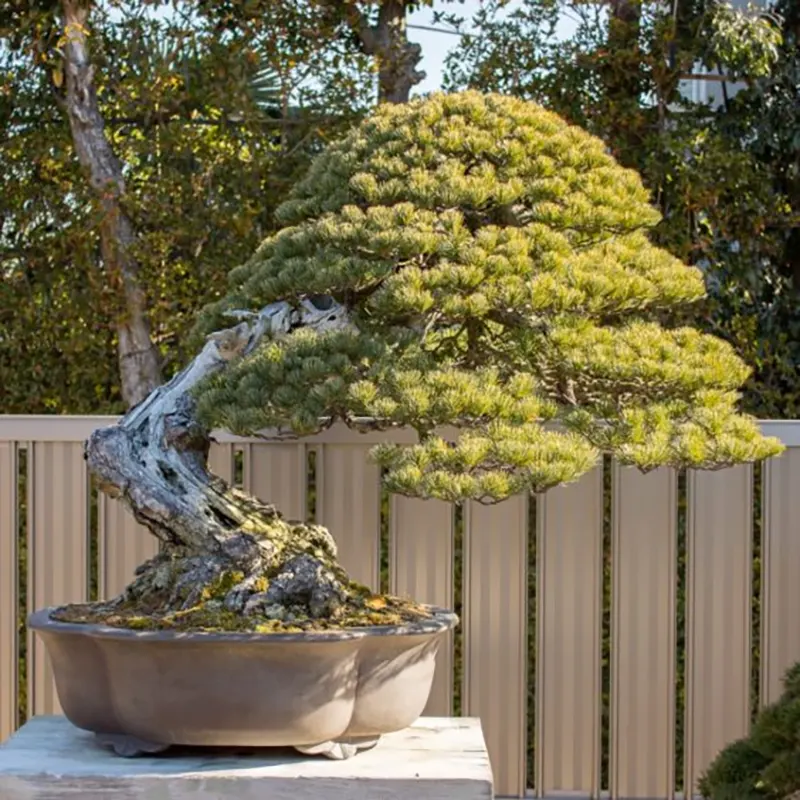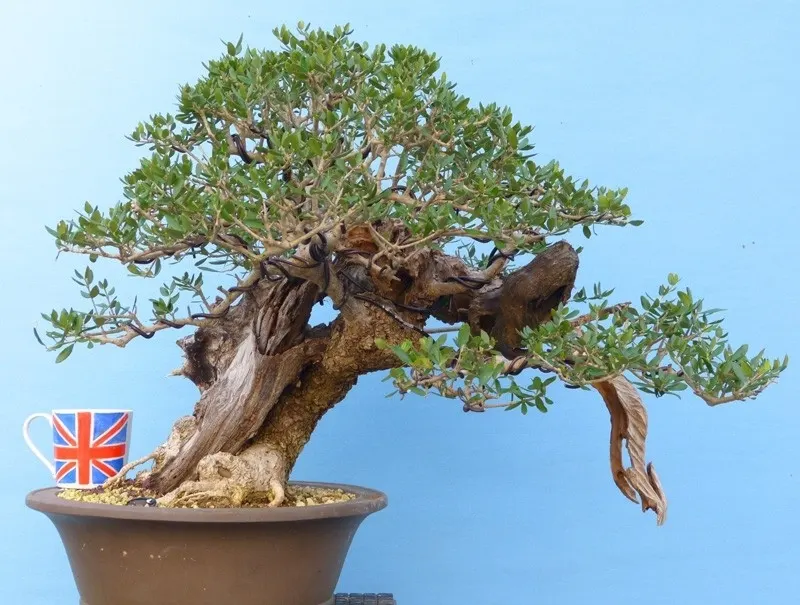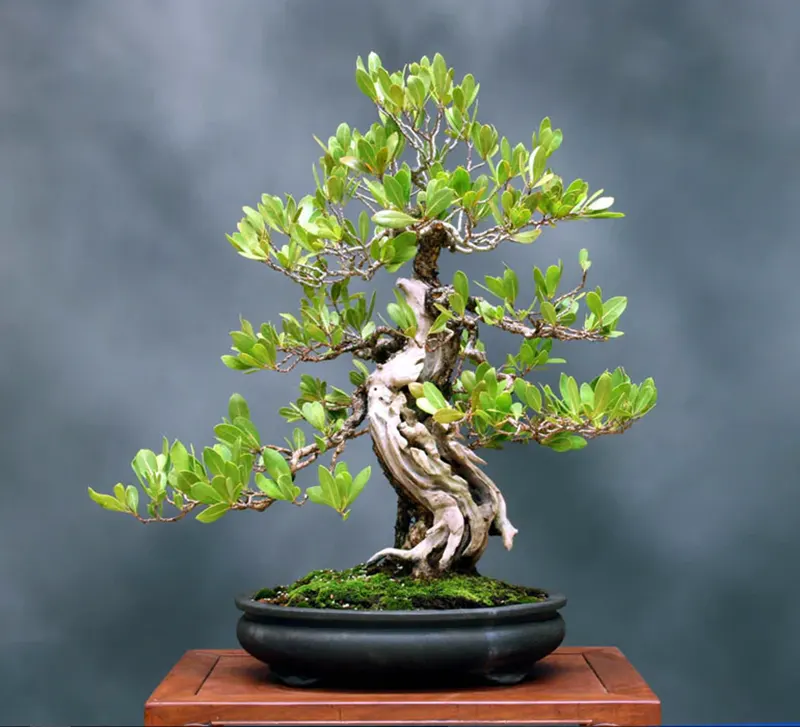Best Bonsai Trees for Deadwood Style
Deadwood on a bonsai specimen evokes an emotional response from people. This emotional response is not only an appreciation for the beauty of the creation but also an appreciation of the hardships that this tree has gone through.
In nature, deadwood on a tree is always a result of some form of hardship through which the tree has lived. This could be drought, fire, storms, or insect infestation. These hardships may have damaged part of the tree, but Mother Nature saw fit to rescue the tree, and now we can appreciate the dynamic, vigorous growth of the foliage as it contrasts with the drama of the parts of the tree that have died. As the wood is exposed to the atmosphere, without the protection of the bark, it dies off and is bleached to a light colour by the sun.
As with many things in bonsai, there are several types of deadwood creation. Let’s start by looking at these.
Types of Deadwood Specimens
There are three styles of deadwood bonsai.
Jin
A Jin bonsai is when a branch or branches have been stripped either entirely or partially of bark.
Shari
A Shari bonsai is when a part of the trunk has been stripped of bark. Sometimes old trunks are stripped of bark, and a new trunk is established using a branch growing from low down.
Uro
An Uro bonsai is where the specimen has an irregularly shaped would or hollow in the trunk. Image source
Image source
Which Trees Can Be Used to Create a Deadwood Style of Bonsai?
This style of bonsai is almost exclusively carried out on evergreens.
Deadwood does not work well on deciduous trees and often rots away entirely. Deciduous trees often drop dead branches, so creating a Jin is almost impossible.
But as with any rule, there are some exceptions. The Buttonwood (Conocarpus) and the Tamarind (Tamarindus Indica) will make excellent deadwood subjects.
Deciduous trees will also take an Uro, and there are some lovely examples of Uro on deciduous trees.
Juniper
Junipers are some of the most popular trees in bonsai because they are hardy, take pruning and shaping well, and can be trained into almost any of the popular bonsai styles.
Junipers are ideal for any deadwood style, but as with any tree, it is better to go slowly rather than try to create your deadwood in one season. Take months or even years to gradually develop the deadwood so that you do not inadvertently kill your entire tree!

Taiwanesne juniper on display in November 2017. Created by master Lee Zhing Hung.
Pines (including Fir)
After Junipers, Pine is perhaps the next most popular species for deadwood styles. Pine trees are also extremely hardy and trainable and will take to almost any bonsai style. Their fine needles and bark that become flaky or scaly as it ages make for lovely Jin or Shari examples.

White pine styled by Masahiko Kimura
Cedar
Cedars are magnificent trees and make excellent bonsai specimens. These trees have beautiful blue-grey needles and lighter grey bark that takes on the best texture as it ages. They are hardy trees that respond well to bonsai shaping, but they are not an ideal tree for beginners. As they are evergreens, they can be used to create deadwood specimens.

Northern white cedar (Thuja occidentalis) U.S. National Bonsai Exhibition album
Olive
Olive trees make excellent, though slow-growing, bonsai specimens. They have lovely silvery-grey foliage, and their trunks develop into magnificent rugged, gnarly examples. Many olives develop deadwood naturally, but they can be carved into beautiful deadwood creations.

Wild Olive
www.kaizenbonsai.com
Buttonwood
This is one of the non-evergreen trees that not only makes an excellent bonsai specimen but also takes to deadwood very well. These beautiful trees often develop deadwood on their own and grow into weird, fantastical shapes ideally suited to bonsai.

Buttonwood with fabulous rugged deadwood. Created by Robert Kempinski.
Can I Do This Myself?
Yes, this is something that any bonsai artist can try. Here are a few guidelines to help you get started:
- Study, study, and study some more. This is the place to start. Take the time to study photographs of jin, shari, and uro examples. Look at how the branches are styled and how the deadwood accents the tree, giving it an aged look. There are lots of excellent YouTube videos on this art. Study them.
- Practice your carving. Do not just jump in and start carving up your trees. Take some discarded branches and practice carving the branches into pleasing shapes using sharp tools and a small Dremel tool. This is not as simple as it sounds, so take the time to practice your technique. Take tiny shards off. Remember, you can take more off, but you cannot put any back!
- If you are ready to try on a tree, take a piece of chalk or a white wax crayon and draw the shapes you intend to carve onto the tree. Stand back and see if the pattern is pleasing to the eye.
- Do not be in a hurry to carve chunks out of your tree. It would be best if you progressed slowly over months or even years, as it is very easy to kill a prized specimen by going too fast.
- This is not an exercise for those long dark winter evenings. Start in spring or early summer, as this is when the tree is at its most vigorous, and it will heal any scars quickly.
- Don’t forget to seal any jin or shari wounds with lime sulfur to protect the tree from insect infestation and to help bleach the exposed wood.
Final Thoughts
Deadwood bonsai creations are stunning and must give the viewer an insight into the hardships that killed parts of the tree while allowing the tree to continue growing. Choose your specimen carefully and remove the bark slowly and carefully.







